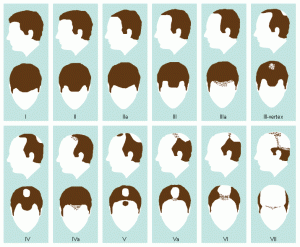LIFESTYLE CHOICES TO FIGHT WINTER HAIR LOSS
Dandruff is a main contributor to winter hair loss. You can counteract dandruff using anti-dandruff shampoo, topical products and healthy hair washing habits. Your dermatologist can also offer topical suggestions or a prescription product. Particularly in the winter, don’t tie your hair too tight in ponytails or braids. Pay attention to how you comb your hair and use a comb with wider teeth. This alleviates tangles and is gentler on the scalp.
Bi-weekly or weekly treatments and hair masks can also alleviate your dry, irritated scalp and strengthen hair. Speak with a hair specialist to determine which formula is best for your scalp and hair. Hot oil treatments and avocado mask are two of the most popular applications to counteract winter hair loss. Look into almond oil or coconut oil as ingredients in hot oil treatments for their nourishing effects. It’s also important not to shampoo your hair too much during winter.
WHEN WINTER HAIR LOSS BECOMES PERMANENT
When hair loss lasts longer than winter and begins to become noticeable, it’s important to speak with a dermatologist or hair specialist to rule out any other underlying cause. When excessive hair loss is not caused by pattern baldness (androgenic alopecia), triggers range from poor circulation to lupus. Non-genetic factors, whether temporary or permanent, also increase hair loss in women more than men.
Permanent:
- Trichotillomania
- Lupus
- Traction/scarring alopecia
- Alopecia areata, totalis, universalis
Temporary:
- Severe stress
- Pregnancy
- Sleep deprivation
- Illness
- Drug use
- Poor circulation
- Malnourishment
- Iron/folic acid deficiency
- Telogen effluvium
- Hormone imbalance
- Untreated hypothyroidism
Nearly 40 million men in the U.S. suffer from some degree of hair loss, according to the American Health Journal. Pattern baldness is a chronic condition unlike winter hair loss. It’s characterized by a well-defined pattern in men beginning with above both temples, followed by a receding hairline and crown loss. For men who experience baldness, 95 percent of them have pattern baldness as the cause.

Approximately 21 million women in the U.S. experience a form of hair loss, according to the American Health Journal. Pattern baldness is the also the leading cause of hair loss in women. The female variant causes hair thinning over the entire head rather than a receding hairline or baldness.
TREATMENT OPTIONS AND SURGICAL PROCEDURES
Once the cause of hair loss is determined, treatments range from lifestyle modifications and dietary supplements to medications and surgery. Consult with a physcian for substantial hair loss, including signs of pattern balding, for a course of action.
- Rogaine (minoxidil)
- Propecia (finasteride)
- Hair transplant
Many patients opt to first try Rogaine or Propecia at the first signs of hair loss. Both medications can also assist you to regrow hair after temporary winter hair loss or other stress or environmental factors. However, both need to take applied or taken on a regular basis to continue their efficacy. Additionally, many men and women wait to start a treatment regimen until hair loss and balding is noticeable.
When pattern baldness is no longer controlled with prescriptions, topical solutions and lifestyle changes, hair transplants are a permanent solution.
The inclusion of the follicular unit extraction (FUE) technique was a remarkable innovation in the industry. It offers many more advantages and less disadvantages of past techniques. Benefits include better aesthetics and reduction of visible scars. FUE is also a less aggressive surgery with a faster healing time period.
